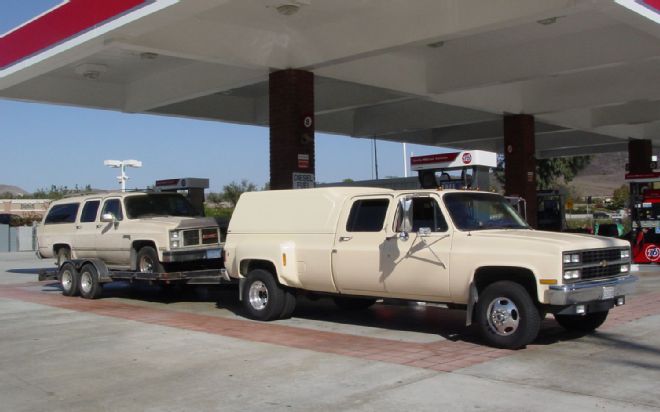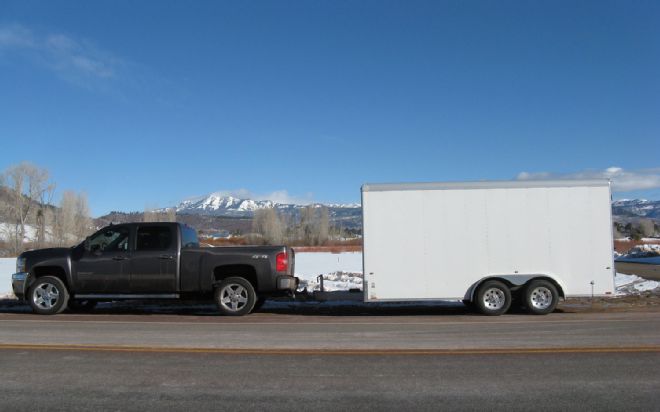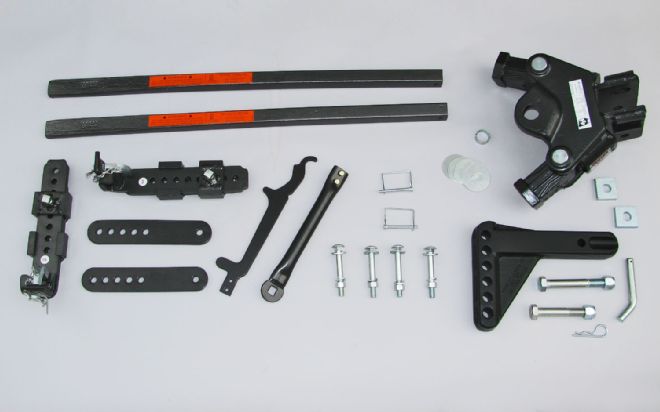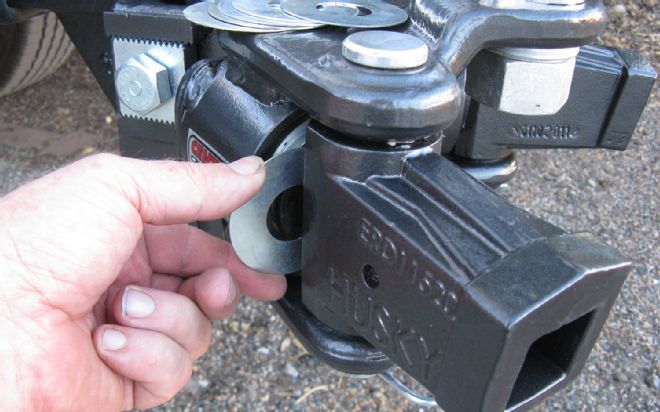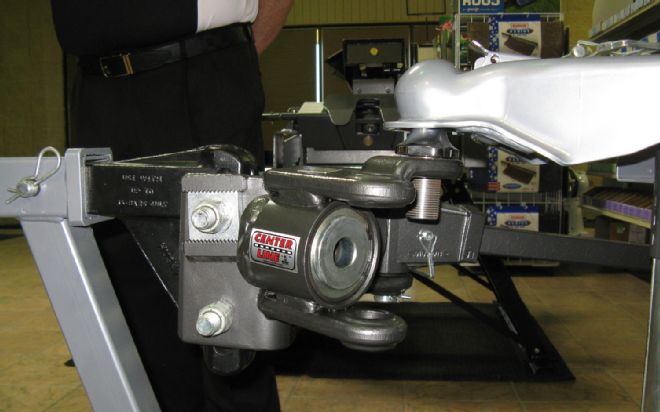You might need a weight-distributing hitch if: Your tow vehicle has the stance of a prerunner with the trailer attached. You have to overinflate the rear tires before heading down the road. Your high beams don't blind people, because they shine over them. So much air goes underneath the vehicle that your mileage suffers. Or you simply want to tow more safely.
Weight distributing (WD) hitches are a well-proven concept, and unless improperly installed and/or adjusted, will definitely help. Handling and braking will improve immensely compared to towing without WD. If the trailer is heavy enough to warrant using such an aid, that is.

| Anti Sway And Weight Distributing Hitches 11
These WD hitches are applicable to most any "bumper pull" semi trailer, but not gooseneck or fifth-wheel trailers. They function by transferring weight to the front of the tow vehicle by lifting the rear of it. Basically, the spring bars (the two bars sticking out of the hitch head) are lifted by the trailer's tongue, much like with the handles on a wheelbarrow. Since they are attached to the trailer's frame and under tension, the spring bars effectively lift the hitch head up, which in turn lifts the rear of the tow vehicle. Yes, this can sound a little counterintuitive, but keep in mind that the trailer coupler pivots on the trailer ball, so while the geometry isn't ideal for effortless lifting, it's not quite the same as lifting yourself up by your boot straps either. Since the trailer normally puts weight only on the rear of the vehicle, the "lift" really results in putting some of the weight onto the front wheels, which is exactly why it is called a weight-distributing hitch.
Like weight distributing, the clever Husky Towing Products Center Line's anti-sway setup also can't help but function, due to basic physics. Since it takes force to turn the trunnions in the hitch head off of center, the trailer will be "forced" to remain straight behind the tow vehicle. That is unlike most other anti-sway devices, which merely offer resistance to any sideways movement between the tow vehicle and trailer, no matter what, which isn't always a good thing. Just picture coming down a slippery grade, getting the trailer a little bit sideways...and now it wants to stay crooked!
The Center Line won't be that cruel to you. It can't, since by design it'll try to straighten the trailer out rather than resisting any and all movement, which can save your bacon -- as well as a bunch of other things, such as guardrails, approaching traffic, and Aunt Edna's gift basket.
There's only one other system that actively tries to keep your trailer straight, and both work well. The Center Line might have an edge when running with a lightly laden trailer as it doesn't rely on tongue weight to function. Either way, that's a great return on a product that sells for under $500.
1. We're not going to bore you with a step-by-step installation procedure, but rather try to give you an idea of the process of setting the system up. Ensure that the trailer is level, then measure from the ground to the inside of the coupler. In this case, you'd add 3 inches to the reading, since that's the length of the body of the tape measure. Always write the measurement down on the instructions, or later on you'll wish you had.

| Anti Sway And Weight Distributing Hitches 01
2. Write down the distance between the top of the fenderwells and the ground, front and rear, on your tow vehicle. This is your baseline, which is essential for later comparisons.

| Anti Sway And Weight Distributing Hitches 02
3. If you don't have a 1-3/4-inch wrench and a 1-13/16-inch socket, and there are no flats on the trailer ball's shank to use a wrench on, it will be hard to keep the ball from turning while tightening the nut to (in this case) 360 lb-ft. If so, cart the hitch head to a shop that has the correct tools -- you really don't want this critical part to be over- or undertorqued.

| Anti Sway And Weight Distributing Hitches 03
4. Bolt the frame lift brackets to the trailer's frame, 30 inches back from the top center of the coupler. Make sure both brackets are equal and square, then torque them down to 65 lb-ft. Check these fasteners after the first trip, and occasionally thereafter, as fore and aft forces are applied to the brackets.

| Anti Sway And Weight Distributing Hitches 04
5. With the spring bars installed in the trunnions, angle the hitch head according to the instructions by moving the two adjustment plates forward or rearward. We wouldn't recommend tightening the bolts more than finger tight -- chances are you'll need to readjust the head later.

| Anti Sway And Weight Distributing Hitches 05
6. Hook the trailer up and lift the spring bars onto the brackets with the supplied tool. Raising the trailer tongue with the trailer jack first really helps. Notice the DS sticker on the bracket. The brackets have to go on their correct side, in this case the Driver Side.

| Anti Sway And Weight Distributing Hitches 06
7. Here's the finished setup, and with everything correctly adjusted the tow vehicle will have settled evenly, front and rear. For example, if both the front and rear wheelwell measurements are now 1 inch lower than before, you got it right. (The trailer pushes the rear down, by tongue weight, then the W-D hitch lifts the rear a bit and shifts some of the weight to the front.)

| Anti Sway And Weight Distributing Hitches 07
8-9. As the towing miles rack up and things wear in, the included shim pack will be useful. Insert shims as needed to reduce free movement and keep the Center Line's anti-sway function as effective as possible. There are Belleville washers (springs) inside those cylinders, and the front of the trunnions are flat, so when the spring bars pivot, the trunnions end up pushing against the spring-loaded pistons. That makes the spring bars want to stay straight, which makes the trailer stay straight behind the tow vehicle, and that is the key to the Husky Center Line system.
10. This weight-distributing hitch uses two spring bars (sticking out of the hitch head) that are lifted by the trailer's tongue. Because they're attached to the trailer's frame and are under tension, the spring bars lift the hitch head up, which lifts the rear of the tow vehicle.

| Anti Sway And Weight Distributing Hitches 10
